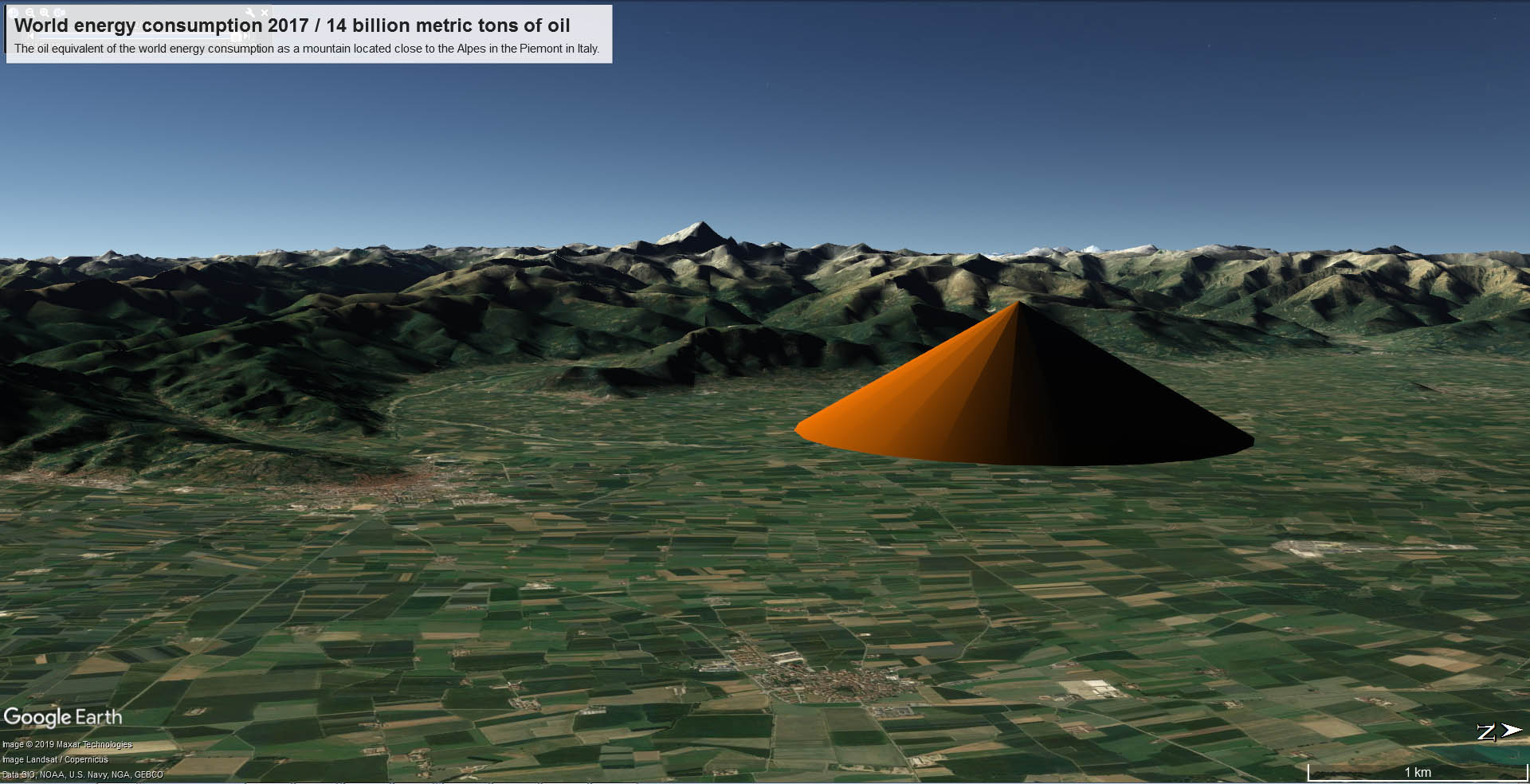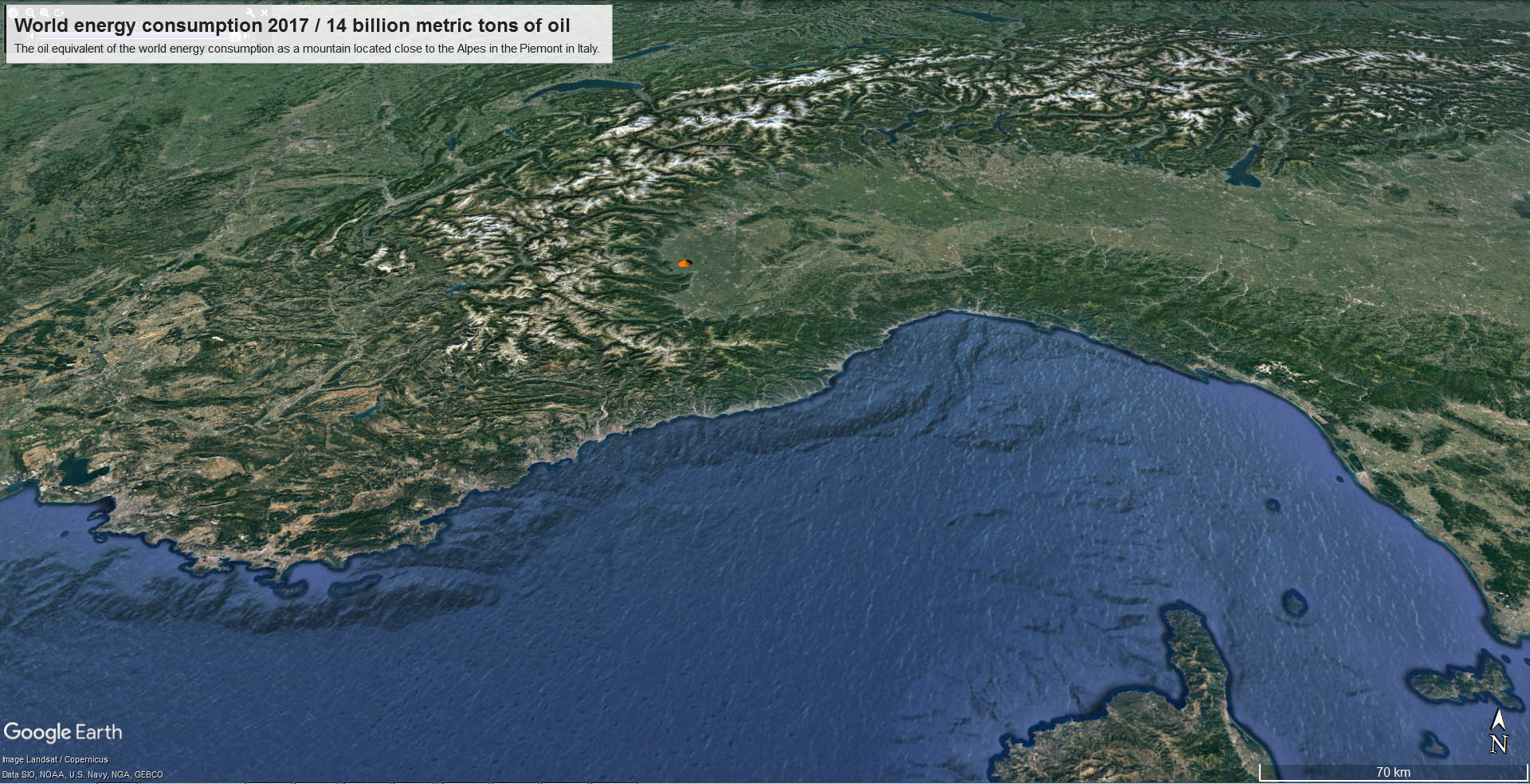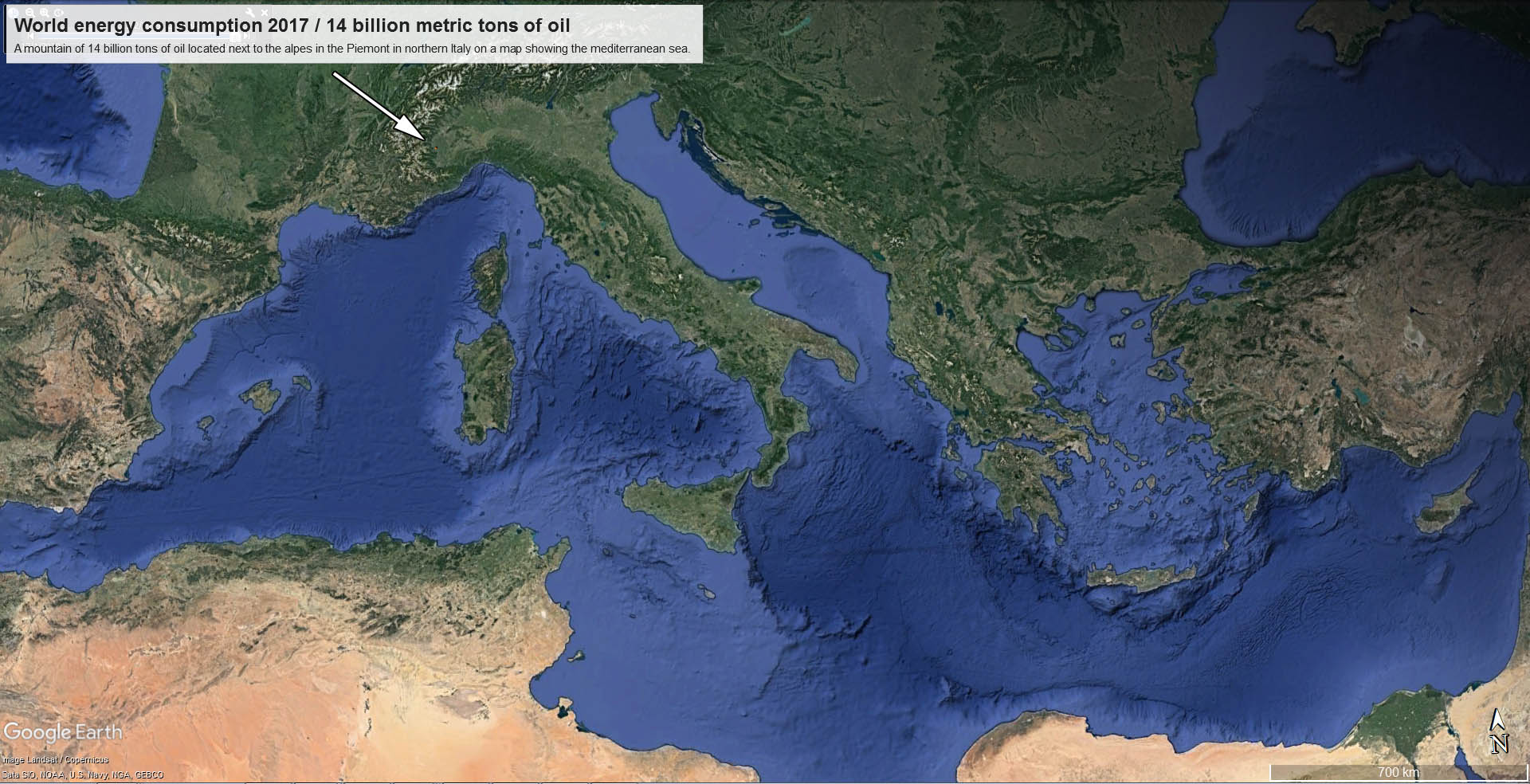I found it difficult to grasp the amount given in the following tweet:
It can be hard to get your head around just how much energy the world uses. Expressed in terms of oil, it was equivalent to almost 14 billion metric tons of the stuff in 2017. https://twitter.com/DropBill/status/1177916708830547970
So how much is 14 billion metric tons of oil? How can one get a feeling for such a large number?
Here is my try to visualize 14,000,000,000 metric tons of oil as a mountain.



A metric ton of oil equivalent is simply an energy unit just like joule or kilowatt-hours are. It is defined as the amount of energy that gets released by burning one ton (1000 kg) of crude oil.
Using a cone makes the result look like a mountain. To me that picture is more useful than the reference to a train full of barrels reaching x times around the globe.
Calculating the parameters for the cone is straight forward. The volume of a cone is 1/3 of it’s base area times it’s height.
With a density of 840 kg/qm a metric ton oil equivalent would have 1.19 qm. Hence the volume of 14 billion tons is 16.67 billion qm. ( https://www.norskpetroleum.no/en/calculator/about-energy-calculator/ )
A cone with a base area radius of 3,000 meters ( 3,281 yards ) and a height of 1,769 meters ( 1,935 yards ) has that volume of 16.67 billion qm.
That’s the cone I placed in the Piedmont in front of Monte Viso.
The book “Landscapes and Geomorphology: A Very Short Introduction” by Andrew Goudie and Heather Viles states
over the whole planet, rivers transport an estimated 14 billion metric tons of sediment to the oceans per year
So that’s another picture for 14 billion metric tons that might help to cope with that number.
